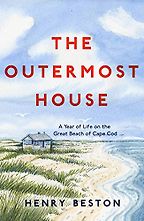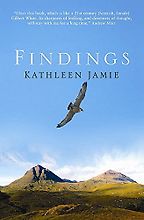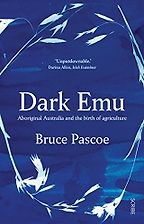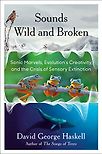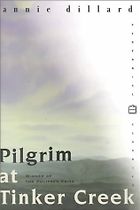Thank you for selecting five natural history books to recommend. To start, might you reflect on what ‘natural history’ comprises, and why we might choose to read it?
At its best, natural history is a study and celebration of the diversity of life, honouring species and places by giving them our close attention. What are the names and stories of other species? How do these species fit together in present-day ecological communities and, looking back, how did they evolve? But the field of natural history—in books and museums—has also, at times, been a racist, sexist, and objectifying exercise.
Natural history books can therefore be portals into wonder and astonishment, leading to deep love of the living world. These books open our imaginations to the lives of others, a joyful process and one all the more important in this age when so many of us feel alienated from the living Earth. But some books, especially older ones, reinforce hierarchies of prejudice and exploitation in the name of curiosity or science. Acknowledging this problematic dimension of natural history is important so that we can move beyond it.
In your own work—most recently Sounds Wild and Broken, a symphonic nonfiction book about the soundscape of the living Earth—you combine natural history with scientific, literary and contemplative studies of the world around you. Previously, your book Thirteen Ways to Smell a Tree dealt with the olfactory signatures of different species. You must feel it’s important, then, that writing about the natural world engages fully with the senses?
My books are grounded in what I hope is a convivial invitation to delight in sensory richness of the world, then to follow those senses into the stories behind them, stories both dark and light.
The senses give us direct connection to other beings. In a world where information often arrives second-hand, shaped by editorial bias and algorithms, such connection is vital. Smelling a tree or listening to a bird is enriching and fun but is also an act of resistance against the ever-thickening barriers between humans and nonhumans.
The senses also inform ethics. The revelations of religion or the exertions of intellect alone cannot answer ethical questions, especially when they concern other species. In other words, if we pay attention to the lives of other beings using our senses, we’re more likely to make good decisions about environmental or other moral questions. Moral philosophers should spend more time listening to frogs and smelling the soil.
“At its best, natural history is a study and celebration of the diversity of life”
We are now the dominant species on the planet. We use at least one-quarter of all the sunlight energy captured by plants worldwide, an astonishing proportion for a primate species that, until recently—geologically speaking—probably numbered only in the tens of thousands, if that. We’re therefore a species that was once very rare, now rapidly grown to extraordinary population size with an ever-expanding appetite for materials. Should we stop listening to other species, calamity will ensue because we will wield great power without direct sensory information, or wisdom. So, paying attention to our senses is vitally important to the future vitality of the world. It can also be a source of joy because the senses connect us to others, erasing alienation and loneliness. This is especially when the sensory experience happens alongside others, whether family members enjoying the taste of good food, students and teachers listening together to the sounds of birds, or authors and readers sharing experiences through writing.
I’m going to move through these books chronologically. You’ve chosen to recommend The Outermost House by Henry Beston (1928), a classic of American nature writing which chronicles a year living in the dunes of Cape Cod. Would you tell us about it?
His writing is taut but lyrical. Few people can evoke a scene with as few words yet so effectively. This matches the sparse, wind-scoured boundary of land and sea that he describes during his year’s sojourn in a cabin in the dunes. The book is also about healing after trauma. Beston was an ambulance driver in the First World War and he sought in the coast an experience “beyond the violences of men”. Despite all the “grim arrangements”, he finds that Nature (his capitalization) is “no cave of pain”, rather our desires and values are humbled next to the beauty, “zest of living”, and “unexpected and unappreciated mercies” of life beyond the human. In our time of collective and individual trauma brought on by growing injustice, climate crisis, and extinction, his words, although in many ways dated, carry a message of renewal. Opening ourselves to the living Earth can heal us, not as an anodyne or escape but as a living, sensual, generative, humbling, and inspiring union with the sources of life.
Speaking of sound, he has some lovely descriptions here. I liked:
The sea has many voices. Listen to the surf, really lend it your ears, and you will hear in it a world of sounds: hollow boomings and heavy roarings, great watery tumblings and tramplings, long hissing seethes, sharp, rifle-shot reports, splashes, whispers, the grinding undertone of stones, and sometimes vocal sounds that might be the half-heard talk of people in the sea…
What is it about his style that you admire?
He truly heard the sea’s many voices. We’re receiving a first-hand account. He deploys verbs wonderfully, evoking the water’s many motions and sounds with vigour and precision. This evokes majesty and terror. Awe, too, sometimes. The book is full of passages that entrain us in the energies of the sea. By the end of the book, reading him becomes a kinaesthetic experience. Our bodily understanding of water is awakened from within. Our muscles, emotions, and intellects understand that the sea has animacy.
Let’s talk about Annie Dillard’s Pilgrim at Tinker Creek (1974) next. The writer Sara Maitland once told us it was “the most beautiful book about the wild.” Why do you recommend it?
This book taught me that careful attention to the living world could be celebrated and explored with rich, sensual language. After sipping for the first two decades of my life on watered-down wine, here was a glass overflowing with blood-red delight. Each taste revealed new layers. I truly got drunk on her writing. After reading this book, there was no going back for me. The idea of spending my professional life writing more scientific papers and grant proposals seemed impossible. I wanted to make wine of my own. In no way do I try to follow Dillard’s footsteps, still less mimic her. My interests and writing style are very different. But I do aspire to a kind of writing that honours the world and words equally. I fall far short of this aspiration, of course.
What I love about Dillard’s writing is how her study of the natural world is entwined with theology, or at least personal writing that feels theological in nature. I’m not religious myself, but it seems to bring some special reverence to proceedings. What do you think about that?
Yes, she is very explicit in this book and in her later works that she seeks knowledge not just about the living world but about the divine. In particular, she asks what we are to make of pain and death, a burden so ubiquitous and heavy that it seems to mock any notion of an omnipotent and omnibenevolent deity. But she also senses that “beauty and grace are performed whether or not we will or sense them”. The tension between crushing darkness and exulting light animates most of her work.
Dillard’s great talent is to remain within the tension, evoking it on the page without pushing toward a simplifying resolution. She is “wondering awed about on a splintered wreck I’ve come to care for, whose gnawed trees breathe a delicate air, whose bloodied and scarred creatures are my dearest companions, and whose beauty bats and shines not in its imperfections but overwhelmingly in spite of them”. This feels very real to me. When I attend closely to a place or a soundscape, I often come away with a sense that the living world is both unfathomably broken and unutterably beautiful. Dillard’s writing explores and honours that paradox.
Both Dillard’s and Beston’s books have been compared to Henry David Thoreau‘s Walden (1850)—do you think it’s possible to write in this field without this happening? Is Walden some kind of urtext?
No, it is not possible, and that is unfortunate because Thoreau is a problematic writer. So many others deserve to be put on the curricular and cultural pedestal ahead of him. But here in the United States we instead suffer from a great surfeit of Thoreau. Certainly, he paid close attention to some of the life around him and wrote sometimes beautifully about it. But he was also a misanthrope and his would-be asceticism is self-righteous and hypocritical. His writing hid his dependence on others, especially women in his family, and he espouses a notion of individuality than is fundamentally un-ecological.
The lesson of the forest, as understood by both forest-dwelling peoples and forest-studying scientists, is that life is made of interdependent relationship. To believe that we earn our living “by the labor of my hands only” is a lie, one with especially pernicious effects in North America where politicians use such ideas of self-reliance as an excuse to turn away from communal responsibility and mutual aid. Kathryn Schultz’s essay about Thoreau in The New Yorker is a good place to start in understanding this not-so-wonderful side of him.
“Almost all early natural history writers in the English tradition were white supremacist in some form or other”
Both Beston and Dillard go out alone, as Thoreau claimed he did, and turn their gaze mostly away from the human lives around them. But they do so not to negate the importance of human relationship but to more deeply attend to the world beyond the human and, in part, to understand and love what is good in humans and nonhumans alike.
Let’s jump forward in time to Findings by Kathleen Jamie (2005). Jamie is a poet, but her books of essays on natural history—starting with Findings, and later Sightlines (2012) and Surfacing (2019)—have been very highly acclaimed. What do you admire about Findings?
Findings, and her later books of essays, are suffused with wit and insight, conveyed in prose so clear, subtly balanced, and powerful that I often put down the book, temporarily stunned. Then I start reading again, with a huge smile of appreciation and admiration. She is renowned for careful observations and reflections that erase the boundaries between the so-called “natural” and human worlds. This erasure—or blurring—is especially important in Scotland, a nation that writers from elsewhere have repeatedly described through a romantic naturalist lens, seeking “wild” refuge and even claiming the landscape as their own. She regards this view as “an affront to those many generations who took their living on that land”.
Reading Jamie’s essays is like being a needle in a growing tapestry, our path determined by a skilful and sometimes playful weaver. Through precise and colourful language she dips and lifts us through the many layers of story that comprise human and nonhuman life in place, gradually building a whole whose overall effect is surprising and inspiring.
Do you have a favourite essay within it?
They are all brilliant. But the opening essay of the book, ‘Darkness and Light’, is magnificent. It opens by situating us at the “still point of the turning year”. Then: “Venus was hanging like a wrecker’s light over the Black Craig”. We have not yet left her kitchen, and already the rhythms of the cosmos are present, another planet shines, local history and language are manifest, and the echo of T. S. Eliot is dimly heard. And so it continues, but the essay is utterly lacking in pomposity or self-regarding literary fireworks. Instead, with wry humour and a keen awareness of the meanings of darkness she takes us into ancient and modern experiences of winter’s dark, a marvellous integration of personal narrative and keen-eyed reflection.
Next you’ve selected Dark Emu by Bruce Pascoe (2014). This is a book that looks at the long history of Aboriginal Australians shaping the landscape. Tell us about it, and why you recommend it.
Pascoe makes a strong argument that Aboriginal Australians were sophisticated agriculturalists, working with plants, animals, water, and soil to create a productive and biodiverse landscape. His book shows how culture and nature were deeply intertwined across the continent. He also makes clear how warfare, murder, disease, and land theft destroyed most of the foundations of this fruitful ecosystem. We cannot understand modern Australia without understanding that much of the continent has been transformed by colonial violence, fundamentally altering soils, plant communities, and animal populations. His is a powerful call to undo what he calls the “amnesia” about Australia’s history and ecology.
There are parallels here with other colonized continents whose “nature” was regarded by many European naturalists as untouched “wilderness” inhabited by “primitives” who had little effect on their environments. The field of natural history writing still sometimes clings to myths of wilderness—ignoring the presence, knowledge, and ecological management activities of indigenous peoples—and Pascoe’s book provides an excellent counter, relevant everywhere. His descriptions of the extraordinary depth of integration between people and the landscape in pre-colonized Australia is also a lesson and inspiration to the rest of the world as we seek more sustainable and resilient economies.
What do we gain from looking so far back through history? Do you think we are myopic when we think about natural history, usually?
Natural history writing has always had a fascination with the relationships among layers of time. Our myopia is not temporal. Instead, the myopia in natural history writing is the gender and race bias that pervaded the genre until recently. Well into the twentieth century, the notion that female animals had agency or were equal to males in their importance in evolution was dismissed. To this day, most accounts of natural history make heteronormative and gender binary assumptions about animals and plants. Yet, in many species homosexual sexual and social bonds are commonplace. Many individual organisms have both male and female sexual organs. In some species, multiple versions of “sex” exist, and so males and females can exist in multiple forms.
Almost all early natural history writers in the English tradition were white supremacist in some form or other, even those who opposed slavery. The field therefore needs more diverse voices represented among authors and, for all authors, our studies of the lives of other species (and our own) should strive to acknowledge prejudice and, as much as possible, seek to move beyond into truer representations of life’s diversity. In my latest book, Sounds Wild and Broken, for example, I have foregrounded discussions of sexism in the study of sonic evolution and of environmental injustice in forest conservation. No doubt my writing is blinkered and imperfect, but I hope that readers with an interest in natural history will understand more clearly how the biodiversity crisis is also a crisis of human rights.
Five Books interviews are expensive to produce. If you're enjoying this interview, please support us by donating a small amount.
Fiction writers are doing astonishingly good work in this area. For example, N. K. Jemisin is usually described as a writer of speculative fiction. True enough, but she is also one of the foremost natural history writers, in my opinion. Her stories are stunning explorations of the intersections of human justice and nature in ways that help us see our own time more clearly. Diversifying natural history writing will include an expanded notion of what the genre comprises. Fiction, poetry, graphic novels, and audio essays all belong.
And now, to cast ahead. You’ve chosen A Natural History of the Future, a recent nonfiction book by Rob Dunn (2021). Why?
Dunn’s book shocked me. We humans are remaking the world so thoroughly that we’ve become an evolutionary force causing rapid natural selection among other species. We’ve known this for decades, but Dunn shows just how speedy and ubiquitous the changes are. Our cities, agricultural fields, and even our bodies are incubators of evolutionary novelty. From viruses adapting to new homes—like Covid-19, insects finding new ways to live in cities, and crop plants and diseases co-evolving, Dunn reframes what “nature” is and will be, both in the near future and long after the human species is gone. Most nineteenth and twentieth century natural history books looked back in time to better understand the present. But the study of history is also about charting possible futures. Dunn’s work and that of his colleagues in evolutionary biology offer a complement and a contrast. In doing so, we receive a significant dose of humility. Humans may be powerful and often destructive, but life’s generative capacity transcends us. In no way does this excuse short-sighted and unethical despoliation of habitats. Rather, the grandeur and creativity of evolution should inspire us to be more thoughtful members of life’s community.
Do you think there is a moral imperative for us to study natural history, and to read natural history books?
The moral imperative is to be better kin and neighbours, both to other humans and what philosopher David Abram calls the more-than-human world. This is easier if we know something about our extended family and home. Such knowledge is the highest aim of natural history, an expression of love for the world in all its diversity.
Get the weekly Five Books newsletter
The magic of books helps. They draw us into community. They also reveal something about our own natural history. The written word is one of the few communicative inventions truly unique to our species. Many other species have language and culture. But none can break the bonds of time and space as we do when we crack open a book and start to read. We wake from the page the thoughts and feelings of people long dead or far away. And so, the very act of reading is an experience of the unique natural history of our own species. Let’s use our super-power for the good of all!
Interview by Cal Flyn, Deputy Editor
June 13, 2022. Updated: June 15, 2022
Five Books aims to keep its book recommendations and interviews up to date. If you are the interviewee and would like to update your choice of books (or even just what you say about them) please email us at [email protected]
